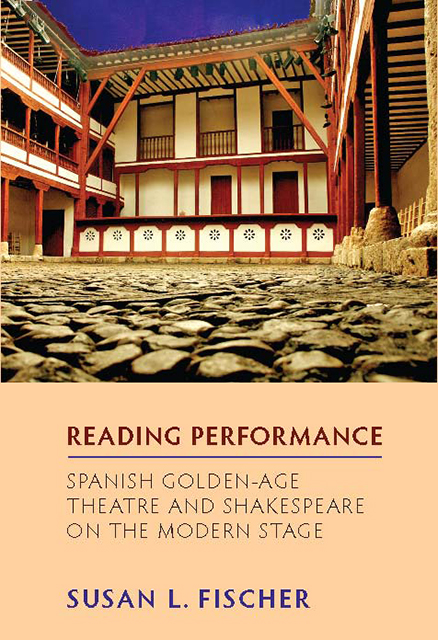2 - Calderón and “l’illusion cinématographique” subverted Antes que todo es mi dama (Above all she's my lady)
Published online by Cambridge University Press: 28 February 2023
Summary
One of the legacies of poststructuralist thought, as we have seen in Chapter 1, is that we can no longer view drama as reflecting life, but rather as operating on it; however much drama may seem to reflect life directly, it is always already portraying it through the cultural system in which it functions, whether that means the historical period of production or the contemporary moment of recreation, reception, and contemplation. This outlook is shared by theatre practitioners the likes of Peter Brook, whose impetus for a mise-en-scène “starts always with the instinctive feeling that the play needs to be done, now” (Shifting 79); that there is a correspondence between the work and particular immediate social, political, or spiritual circumstances. The implication, as Charles Marowitz states, is that “historicity and contemporaneity must go hand in hand in every legitimate classical revival” or, put another way, “insights have to be found by scanning seventeenth-century material with twentieth- [or twenty-first-] century radar” (101, 59). The dialogue of present and past, of change within continuity, that characterized Adolfo Marsillach’s broadly “reformist” approach to Spanish classical theatre was clearly manifested in his production of 1987 of Calderón's dramatic text Antes que todo es mi dama (1635?).
Marsillach's performance text staged a 1930s movie in the making – “Antes que todo es mi dama: a sonic film based on a work by Calderón” – when soundtrack was displacing the silent movie and “theatrical cinema” was barely distinguishable from “cinematic theatre.” His point of departure was the prosaic notion of comedia's cinematic structure: “Yo leí alguna vez en algún sitio que nuestras comedias clásicas tienen un ritmo cinematográfico y, claro, me quedé con la copla” (Antes). Brook also associates this structural pattern with Shakespeare in spelling out his notion of “rough theatre”:
In England at least, all productions for quite some time have been influenced by the discovery that Shakespeare's plays were written to be performed continuously, that their cinematic structure of alternating short scenes, plot intercut with subplot, were all part of a total shape. This shape is only revealed dynamically, that is, in the uninterrupted sequences of these scenes, and without this their effect and power are lessened as much as would be a film that was projected with breaks and musical interludes between each reel.
- Type
- Chapter
- Information
- Publisher: Boydell & BrewerPrint publication year: 2009

